Summer is the perfect season to explore the great outdoors and capture the beauty of nature through landscape photography. With vibrant colors, clear skies, and long daylight hours, summer provides you with plenty of opportunities to create stunning images.
Part of the program of summer landscape photography is simply finding the time to get out and shoot (which can be easier said than done!). But, you also need the skills behind the lens to get the best results.
In this article, I’ll share some essential tips to help you make the most of your summer landscape photography. We’ll cover everything from choosing the right time of day to utilizing natural elements, adjusting camera settings, and enhancing your photos through post-processing. In other words, you’ll get a dash of this and a dash of that, so you have a fully stocked toolkit to elevate your summer landscape photography game.
So, with that, let’s get to it!
Table of Contents
- Choosing the Right Time of Day for Summer Landscape Photography
- Utilizing Natural Elements in Summer Landscape Photography
- Camera Settings and Equipment for Landscapes
- Post-Processing Techniques for Summer Landscape Photography
- Bring It Home With a Beautiful Print
Choosing the Right Time of Day For Summer Landscape Photography
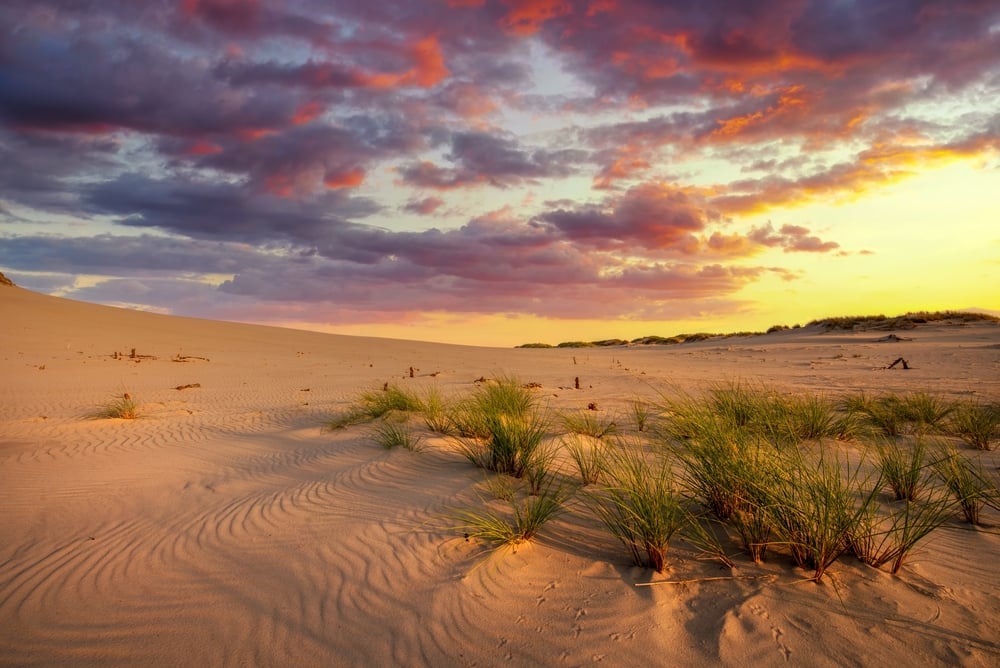
Photo by Piotr Krzeslak via Shutterstock
One of the most critical aspects of landscape photography is lighting, and the time of day plays a significant role in determining the quality of light. Understanding when to shoot can make a dramatic difference in your summer landscape photography photos.
Golden Hour
The golden hour, which occurs shortly after sunrise and before sunset, is a magical time for photographers. During this period, the sun is low in the sky, casting a warm, soft light that creates long shadows and enhances textures. The golden hour light is ideal for bringing out the rich colors of a summer landscape.
Blue Hour
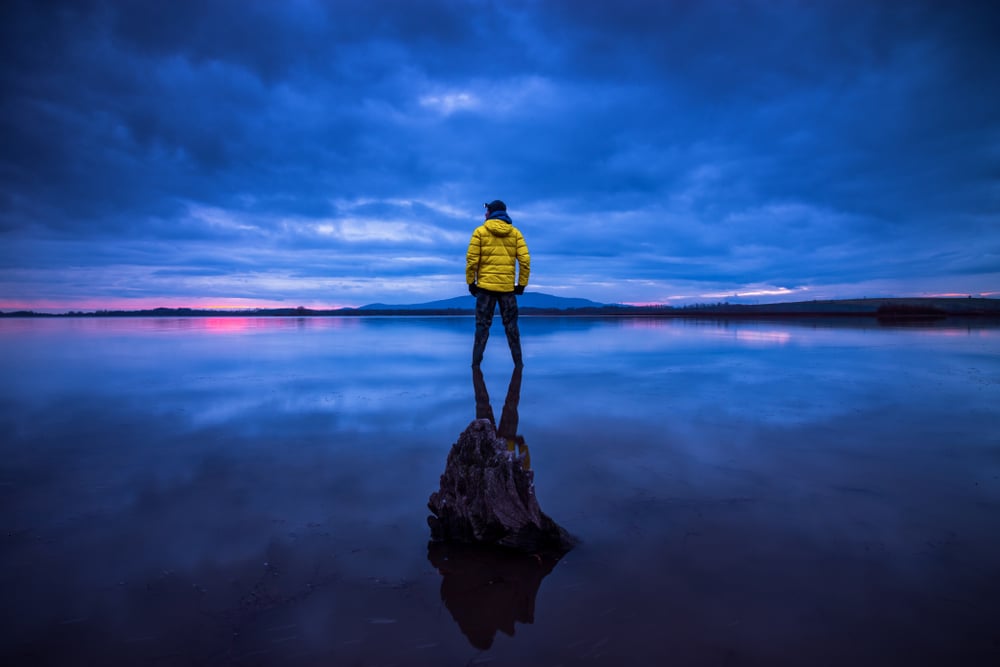
Photo by Wojciech Dziadosz via Shutterstock
The blue hour is the time just before sunrise and after sunset when the sun is below the horizon, and the sky takes on a deep blue hue. This period offers a unique lighting condition that can add a moody and ethereal quality to your photos. It’s perfect for capturing serene and tranquil scenes.
Midday Challenges
While the golden and blue hours are perfect for landscape photography, sometimes you may find yourself shooting during the harsh midday sunlight. The light at this time is intense and can create harsh shadows and overexposed highlights. To manage this, look for shaded areas or use a polarizing filter to reduce glare and enhance colors. You can also experiment with black-and-white photography, where strong contrasts can add a dramatic effect.
Weather Considerations
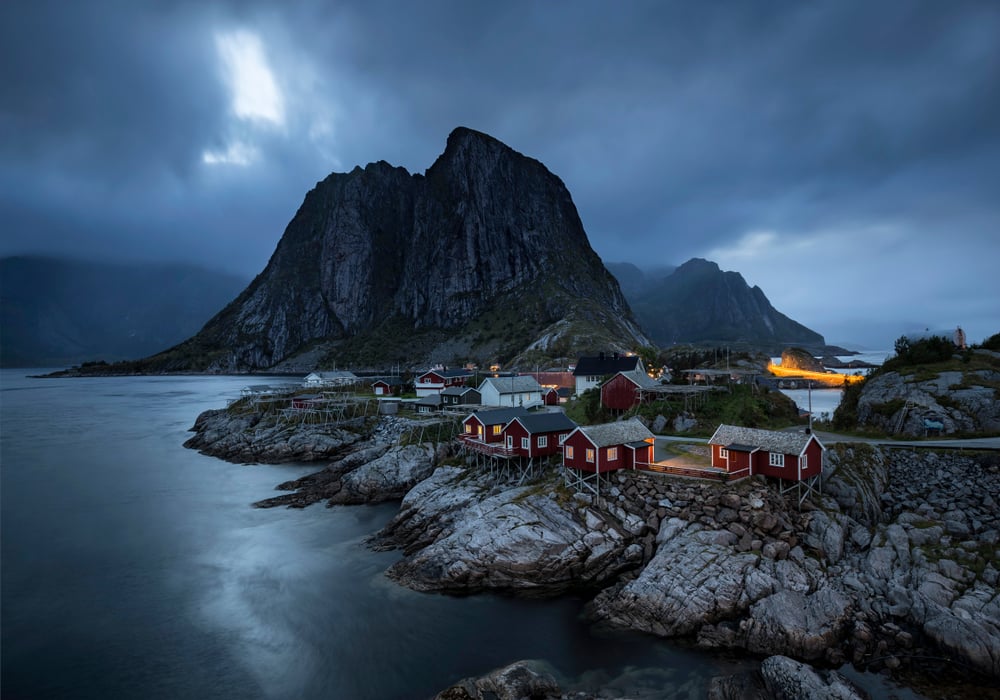
Photo by midfon via Shutterstock
Needless to say, weather can significantly impact the quality of your photos…
Overcast days provide diffused light that reduces harsh shadows and brings out details in a summer landscape. Stormy skies can add drama and a sense of scale to your landscapes. As noted above, bright sunlight can create harsh shadows and tons of contrast that are ideal for black-and-white summer landscape photography.
Always keep an eye on the weather forecast and be prepared to adapt your plans accordingly. Getting the best results relies in part on working with what you’ve got. If you head out looking for only one type of landscape with the ideal weather conditions for that area, you’ll probably be disappointed! Don’t be afraid to pivot and pursue other types of images based on what Mother Nature is doing.
Utilizing Natural Elements in Summer Landscape Photography

Photo by Smit via Shutterstock
Incorporating natural elements into your compositions can elevate your summer landscape photography by adding depth, interest, and a sense of place. Reflections are a fantastic place to start. Water bodies like lakes, rivers, and ponds can create stunning reflections that add symmetry and balance to your photos. Position yourself at a low angle to capture the reflection clearly. Early morning or late afternoon is ideal for this, as the light is softer, and the water is often calmer.
Leading lines are another compositional tool you can use to create better shots. Lines are visual elements that draw the viewer’s eye through the image and towards the main subject. Natural features such as rivers, trails, and tree lines make excellent leading lines. Position these elements diagonally or horizontally to guide the viewer’s gaze across the frame.
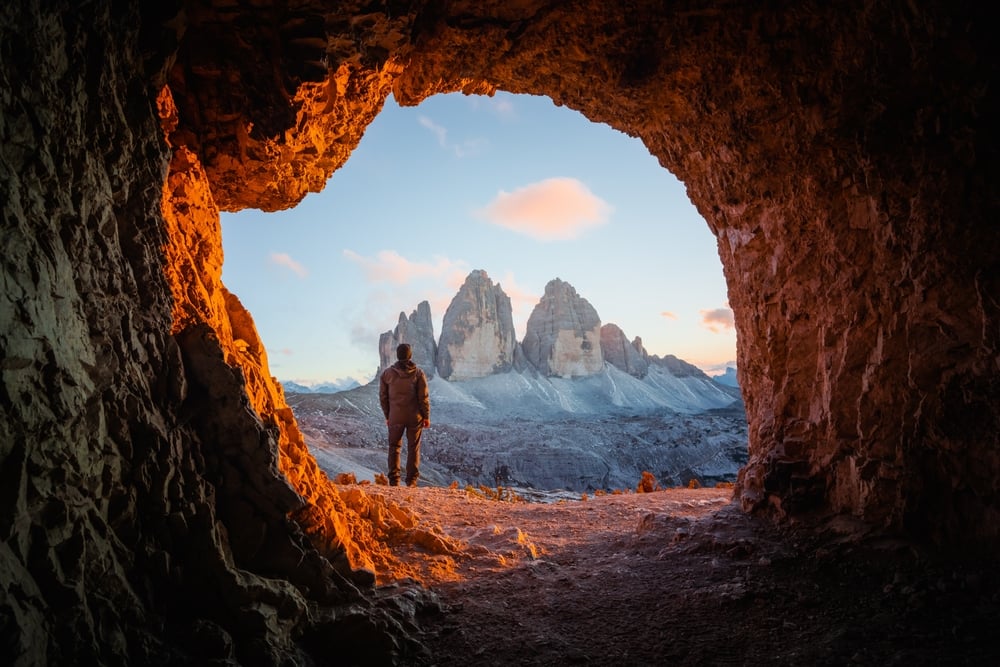
Photo by Smit via Shutterstock
Using trees or branches to frame your shot can also improve the composition of your summer landscape photography. Specifically, trees or branches create a natural border and add depth to your composition. This technique helps to direct attention to the central subject while adding context and a sense of scale. Be mindful of how the light interacts with the foliage, creating interesting patterns of light and shadow.
Of course, we can’t miss out on discussing foreground interest…
Including elements in the foreground of your composition can add a sense of depth and scale. Flowers, rocks, or even patterns in the landscape can serve as compelling foreground subjects. Ensure that your foreground is in sharp focus to maintain clarity throughout the image.
Camera Settings and Equipment for Landscapes

Photo by Photostriker via Shutterstock
Choosing the right camera settings and equipment is crucial for capturing high-quality landscape photos. While each of the topics discussed below is far too broad to discuss in detail here, you can get a general sense of basic camera settings and equipment you’ll need for landscape photography.
Aperture and Depth of Field
Aperture settings play a significant role in determining the depth of field in your photos. For landscape photography, a smaller aperture (higher f-stop number), like f/8 to f/16, is ideal to ensure that both the foreground and background are in sharp focus. However, if you want to isolate a specific subject, a larger aperture (lower f-stop number), like f/2.8 to f/4, can create a beautiful bokeh effect.
Shutter Speed
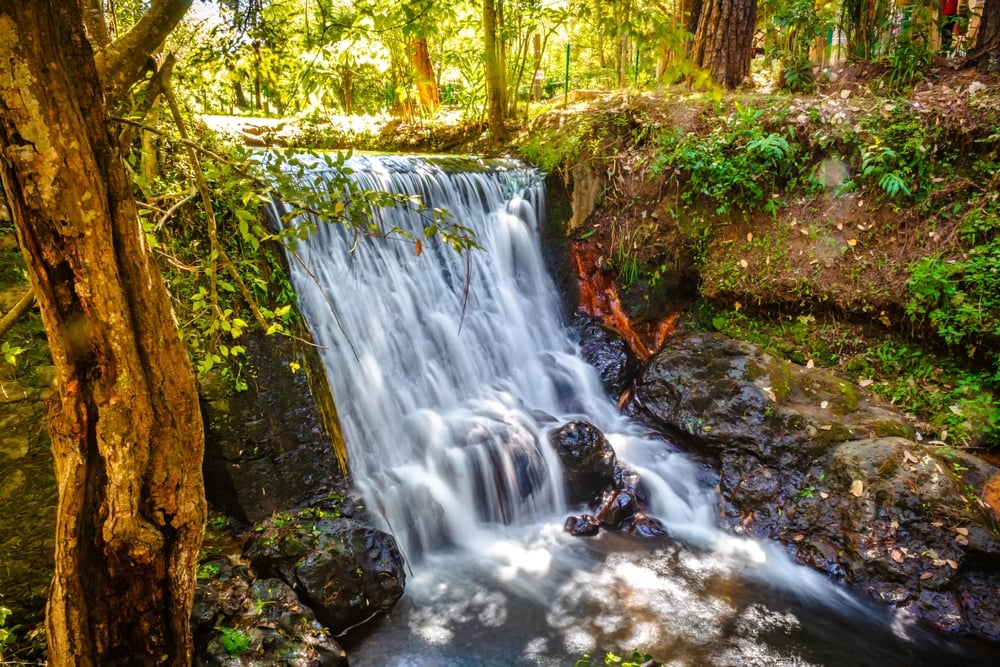
Photo by Alex Borderline via Shutterstock
Shutter speed affects how motion is captured in your photos. For sharp, detailed images, use a faster shutter speed, like 1/500-1/1000 seconds. If you want to capture motion blur, such as moving water or clouds, experiment with slower shutter speeds, like 1/30th of a second or slower. But beware – a tripod is essential for long exposure shots to avoid camera shake.
ISO Settings
Keep your ISO as low as possible to reduce noise and maintain image quality. In bright conditions, an ISO of 100 or 200 is sufficient. In lower light situations, you may need to increase the ISO (say, to 800, 1600, or higher), but be mindful of the trade-off between sensitivity and noise. It’s worth studying the exposure triangle, too, so you understand the interrelationship between aperture, shutter speed, and ISO.
Essential Equipment
Aside from a sturdy tripod, polarizing filters are essential for summer landscape photography. These filters can enhance colors and reduce reflections, while neutral density (ND) filters allow you to use slower shutter speeds in bright conditions. Wide-angle lenses are ideal for capturing expansive scenes, while telephoto lenses can help you isolate distant subjects.
Post-processing Techniques for Summer Landscape Photography
As discussed in the video above by Sam & Hannah Bose Photography, post-processing is an essential step in bringing out the best in your landscape photos. Give their video a watch to get a full rundown on a complete start-to-finish editing process. I’ve listed a few critical editing tools and tips below as a quick-start guide for summer landscape photography post-processing, too:
- Start by adjusting the exposure to ensure that your image is correctly lit. Increase the contrast to make the colors pop and add depth to the scene. Be careful not to overdo it, as too much contrast can result in a loss of detail.
- Summer landscapes are full of vibrant colors. Use the saturation and vibrance sliders to subtly enhance these colors. For a more natural look, consider using selective color adjustments to boost specific hues without affecting the entire image.
- High Dynamic Range (HDR) processing involves combining multiple exposures to capture a wider range of light and shadow details. This technique is particularly useful for scenes with high contrast, such as sunsets or sunrises. Most modern cameras have an HDR mode, or you can use post-processing software to merge your exposures.
- To capture wide, expansive landscapes, consider creating a panorama by stitching multiple images together. Use a tripod and overlap each shot by about 30% to ensure seamless merging. Panorama stitching software can then combine your shots into a single, stunning image.
- Selective editing allows you to adjust specific parts of your image without affecting the entire photo. Use tools like the graduated filter or radial filter to enhance the sky, add a vignette, or draw attention to a particular area. This technique helps to create a more balanced and visually appealing composition.
Bring it Home with a Beautiful Print
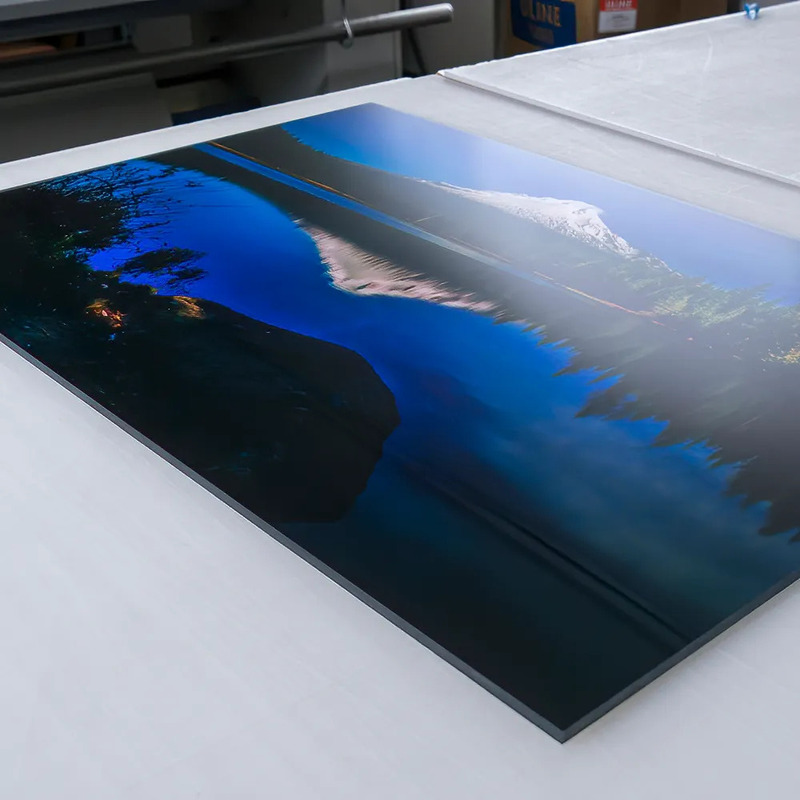
The final summer landscape photography tip I want to offer is the notion that you should select your very best images to have printed. The process of doing so can be enormously informative and helpful for your growth as a photographer.
Think about it…
Printing an image requires you to survey all the photos you took, pick the best ones, and take time editing them. Then ,you have to consider which of the final batch speaks most to you, and more importantly, why it speaks to you.
There’s something to be said for holding a print of your image in your hands as well. It’s one thing to see it on a computer screen, but to have a physical print you can feel and hang on your wall makes the experience all the more real.
Printing Options for Your Images
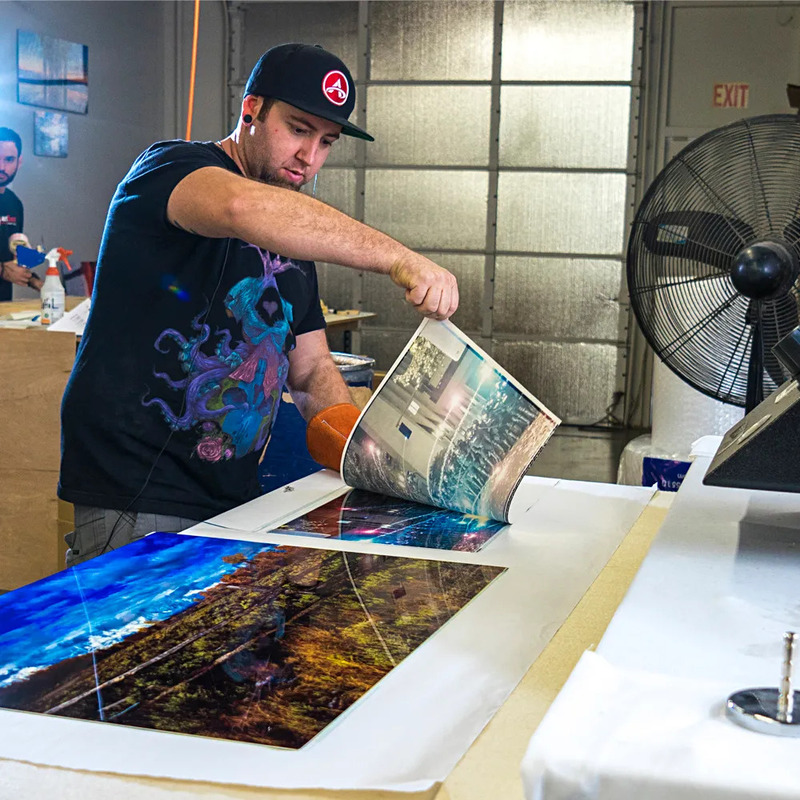
These days, your options for printing summer landscape photography are virtually limitless. You can work with any number of online printers to get things like metal, acrylic, canvas, or paper prints. But not all printing companies are made alike…
I’ve worked with Artbeat Studios for a number of years now, and they have always provided me with some of the very best prints I’ve ever gotten. This goes for all the various substrates they offer, too. I’ve reviewed their metal, acrylic, canvas, and paper prints over the years, and in each instance, I was blown away by the quality of the prints. Heck, they even turned one of my iPhone photos into a stunning metal print, as you can see in my video below:
Anyone can slap an image on a substrate and dropship it to you. But the folks at Artbeat Studios do so much more than that. Aside from having a team of highly-skilled artisans, Artbeat Studios uses only the finest-quality materials and cutting-edge tools to create your prints.
What’s more, the care they take for your images is truly impressive. I’ve been in their shop and watched them work, and you’d think every customer was their own mother or grandmother. The Artbeat team knows that your images are important to someone, so they want the viewing experience to be second to none.
So, once you’ve edited your favorite images, don’t trust anyone to do the job of turning them into prints. Give Artbeat Studios a try and experience products and services that are the cream of the crop!
Friendly disclaimer: Our articles may contain affiliate links that support us without costing you more, and sometimes we spice things up with sponsored content—but only for products we truly stand behind!
Learn More:
Hero photo by Smit via Shutterstock


[…] Summer Landscape Photography Tips […]
[…] Summer Landscape Photography Tips […]